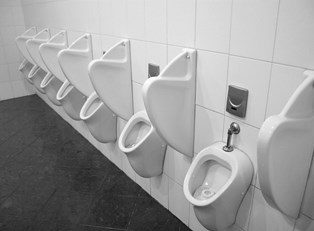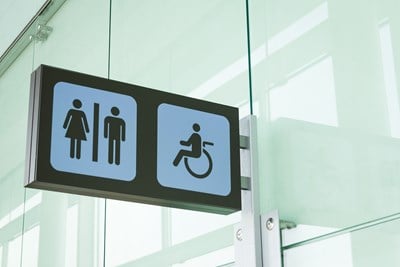Nearly five million American men have urinary incontinence. This is actually a small number considering that about four times as many American women suffer from the same problem.
Below we take a look at what causes male incontinence and what they can do to treat it.
Male incontinence is typically caused by an enlarged prostate, prostate surgery, spinal injuries, diabetes, neurological disorders, excess weight and weak muscles around the pelvis. As a man ages, the muscles around the bladder begin to weaken, causing stress to be put on the bladder. The result is incontinence, or urinary dripping after the emptying of the bladder. The drips may seep through underwear and pants, providing totally unnecessary embarrassment.
Male incontinence solutions do exist. Absorbable underwear products are available. There are also special “compression pouches” that offer assistance to the urethra. These can be purchased in pharmacies. In the most extreme incontinence situations, devices known as external collection units can be applied over the penis for excess urine. Corrective surgery is also becoming a more popular option. An artificial rubber sphincter can be inserted around the patient's urethra, inflated and deflated when necessary to maintain proper urine flow. Or, patients can opt for a bulbourethral sling procedure where a small rounded mesh is implanted to assist the urethra. Medications are also available to shrink the prostate, settle the bladder muscles or correct neurological disorders that contribute to incontinence. One's intake of fluids can be minimized to prevent future episodes of incontinence. Heavy fluid intake should only occur during or after large meals. The food will help absorb the moisture and reduce incontinence. Caffeinated beverages and alcohol should be avoided as they dehydrate the body, forcing it to release its fluids.
Those suffering from male incontinence should also"bladder train." This is the scheduling of bathroom usage. It forces the body to learn to hold fluids in the bladder for extended periods of time, allowing the pelvis muscles to re-strengthen. Men can also do kegel exercises which contract the muscles used when one attempts to stop urinating. Once these muscles are squeezed, they should be held in that position. These should be done in sets of 10. Do 10 slow contractions then 10 fast, three times a day. Increase the repetitions each day until 80-100 can be performed in a single day. Kegel exercises are stereotyped as only performed by women but they are quite effective for incontinent men.
Male incontinence can also cause serious skin problems like skin fungus and rashes near the scrotum area. This is due to the collection of moisture caught between the undergarments and the skin. Men who suffer from incontinence should inspect their skin for any sign of a rash or fungus growth. This is easily treated with various “barrier creams” and special moisturizers that will prevent the skin from becoming inflamed. Rashes and infections can also occur when men do not rotate their absorbent pads or external collection units in and out at least once a day, preferably every few hours.




